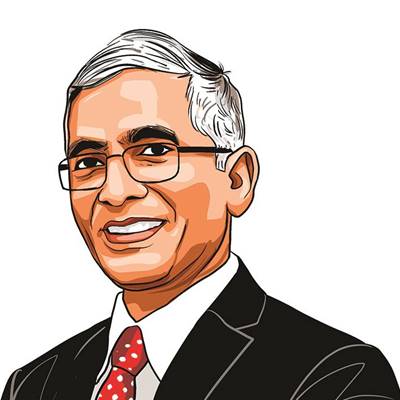Opinion Parameswaran Iyer and V Anantha Nageswaran write: Giving data its due
National Data and Analytics Platform enables policy-makers and researchers to exploit the potential of government data
 Public data is often stored on platforms that are difficult to use and in formats that delay analysis.
Public data is often stored on platforms that are difficult to use and in formats that delay analysis. The oft-used phrase “data is the new oil” has almost become a cliché. The world’s ability to generate data is now increasing exponentially. Every minute, servers log information on all aspects of society, from consumer and industry behaviour to the delivery of government programmes. In many respects, the Government of India is not only leading this drive but also creating new roadmaps by enabling the development of a rich data ecosystem.
Collecting and storing data is just the first step in realising its potential. A coherent data ecosystem — that is, a strategy and a set of tools to process, manage and use data — is essential. At the scale of the Government of India, improvements to the data ecosystem can have profound positive impacts.
In May 2022, the NITI Aayog, in collaboration with ministries and state governments, endeavoured to fill this need by launching a transformational open data platform called the National Data and Analytics Platform (NDAP). NDAP serves foundational datasets from central and state government entities in machine-readable formats, with a user-friendly interface and powerful analytics. The platform uses cutting-edge methods to link diverse datasets from across the government and enables the use of several types of data at once. NDAP’s target users include policymakers, civil servants, university students and researchers, journalists, innovators, and civil society groups. A platform of this scale and vision is rare, and NDAP can set a global standard.
Explicitly designed to solve the issues that limit the use of government data today, the design process of NDAP was preceded by extensive research with diverse data users to learn about their demand for government data, skills to use it effectively and challenges faced in doing so. Public data is often stored on platforms that are difficult to use and in formats that delay analysis. Data from different sources do not speak to each other, meaning users cannot compare data from different departments or data gathered over time. Finally, because of slow updating processes and inconsistencies in data quality, it is not always clear that the appropriate data is publicly available. To address these challenges, every step of the NDAP design process includes rigorous user testing to ensure that the platform precisely solves these issues.
Consider a state-level civil servant who wants to build new primary health centres (PHCs) in the largest communities in the state that lack existing health facilities. To identify these communities, she first needs to find and integrate three datasets from three different organisations: The health department’s MIS to get a list of communities with existing PHCs; the Economic Census from the Ministry of Statistics and Programme Implementation to get a list of communities with private health facilities; and the Population Census from the Registrar General of India to prioritise villages based on size. These datasets are all public but finding them and downloading data for the right state takes time and requires knowledge of three separate portals. Once that is done, she faces the greater challenge of coherently linking the datasets to produce a single list of the largest communities without existing health centres.
This is a technically daunting and time-consuming process that should not be necessary because the technology exists to link all the data on a single portal. With NDAP, in a matter of minutes, the decision-maker can access the data from all three sources seamlessly linked into a single dataset. She can then download the data and analyse it using her preferred method or use inbuilt analytics and visualisation tools to better understand the data on the platform itself.
Across hundreds of similar decisions she may take in a year, the civil servant can save considerable time and make her decisions more data-driven. In turn, the people of the state can enjoy better governance and programme outcomes. Neither the technical tools nor the data that enable this improved scenario are ground-breaking; rather, the revolutionary value of NDAP is to bring them together on a platform that is precisely attuned to the needs of its users.
The Prime Minister has often exhorted the adoption of evidence-based policy-making and implementation. However, such a goal can only be met with active collaboration with states. Hence, NDAP has been made an integral part of the State Support Mission of NITI Aayog. The development of state-specific portals on the lines of NDAP not only helps in cost and time saving but also ensures that all states are equal partners in this journey of becoming champions of data-driven policymaking.
Developed in the spirit of cooperative federalism, NDAP strives to maintain the principles of collaboration across the board. Since its launch, there has been proactive outreach to bring in various stakeholders as users and data providers. Its public access has provided opportunities for all, including states, ministries, and India’s data community, to support NDAP by helping improve, expand and update the platform’s existing datasets and capabilities.
From the last quarter, training on NDAP has been included in the curriculum of officer trainees at the Lal Bahadur Shastri National Academy of Administration, Mussoorie. This will enable incoming government officers to develop a data-driven decision-making mindset from their first field job. Together, we can make NDAP an open data platform that can play a vital role in facilitating data-driven governance.
Iyer is CEO, NITI Aayog. Anantha Nageswaran is Chief Economic Advisor to the Government of India. Views expressed are personal





